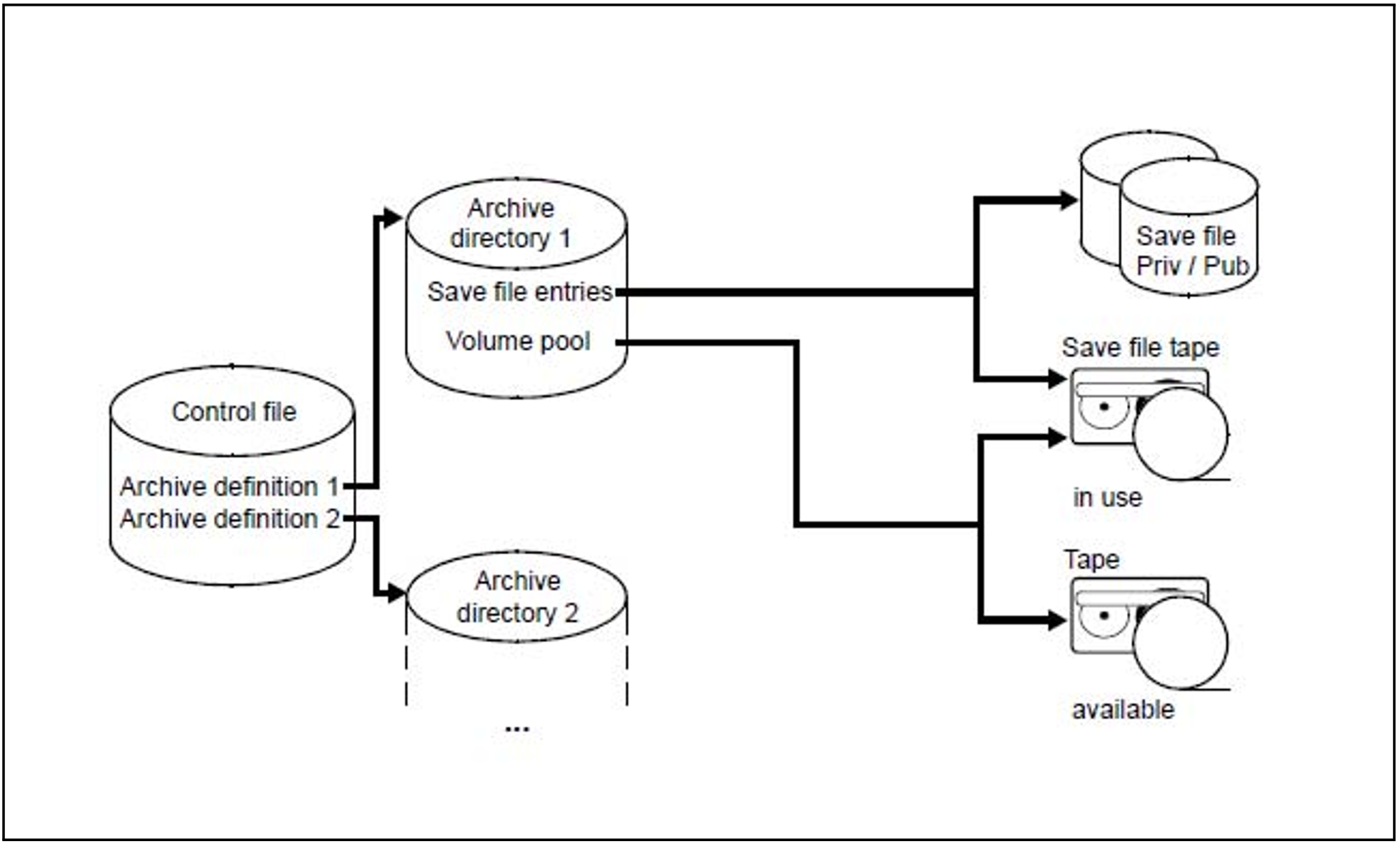The archive is the basic HSMS management unit. HSMS stores and manages all saved, archived and migrated data (files and job variables) in archives.
Each archive consists of
the archive definition, which is stored in the central control file and defines the archive’s attributes
the archive directory used for managing the files, job variables and volumes saved in this archive (implemented as an ARCHIVE directory file)
the volumes and save files containing the saved data.
When processing BS2000 files, HSMS distinguishes a different type of archive for each of the three basic HSMS functions - backup, archival and migration - plus the archive type “shadow archive”. Shadow archives are used to administer the copies of save files which are automatically created on magnetic tape cartridges for backups and archivals.
When processing node files, HSMS distinguishes two further archive types, one for backup and one for archival.
None of these basic HSMS functions can be executed until an appropriate archive has been created. All HSMS statements to any of these basic functions refer to existing archives.
Nonprivileged users can only manage their own archives. They can access public archives according to the set access permissions (USER-ACCESS). For this, backup archives have to be set up under SYSHSMS.
When CREATE-ARCHIVE is carried out by a nonprivileged user, the user ID of this user becomes the owner of the archive.
When CREATE-ARCHIVE is carried out by an HSMS administrator, the user ID SYSHSMS is set up as the owner of the archive, unless a different user ID is specified in the archive name, and if this is the case then this user ID will become the owner.
The owner is responsible for the administration of the archive.
Shadow archives, migration and version backup archives must be installed by a HSMS administrator.
Nonprivileged users can obtain information on data managed in a public archive and belonging to their respective user IDs. If the archive owner allows other users to access his archive/directory (via SECOS), then each co-owner can use the archive as though it were his own. However, co-owners cannot manage the archive, i.e. they cannot share save files or change retention periods.
Data transfer
HSMS does not manage exported data in archives; after all, exported data is to be used at another location. However, it is possible to manage information about exported data in a directory whose structure is identical to that of an archive directory.
The exported data is written to save files which are treated like the save files of the other HSMS basic functions. In this respect, the sections on the save files and versions in this chapter also apply to data transfer.

